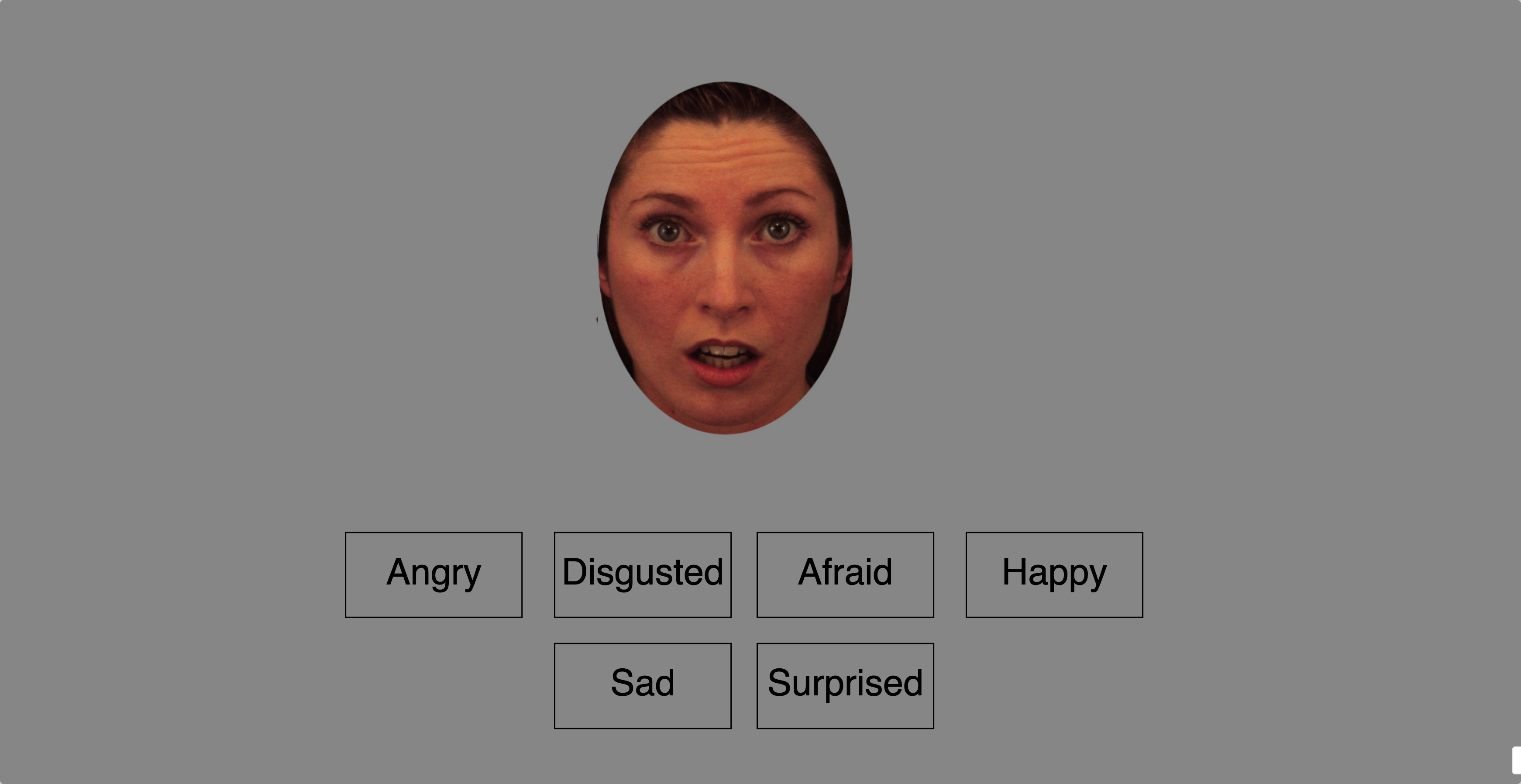Emotion labelling¶
Part of the same reference as emotion matching.
Abstract¶
Although good tests are available for diagnosing clinical impairments in face expression processing, there is a lack of strong tests for assessing “individual differences” – that is, differences in ability between individuals within the typical, nonclinical, range. Here, we develop two new tests, one for expression perception (an odd-man-out matching task in which participants select which one of three faces displays a different expression) and one additionally requiring explicit identification of the emotion (a labelling task in which participants select one of six verbal labels). We demonstrate validity (careful check of individual items, large inversion effects, independence from nonverbal IQ, convergent validity with a previous labelling task), reliability (Cronbach’s alphas of .77 and .76 respectively), and wide individual differences across the typical population. We then demonstrate the usefulness of the tests by addressing theoretical questions regarding the structure of face processing, specifically the extent to which the following processes are common or distinct: (a) perceptual matching and explicit labelling of expression (modest correlation between matching and labelling supported partial independence); (b) judgement of expressions from faces and voices (results argued labelling tasks tap into a multi-modal system, while matching tasks tap distinct perceptual processes); and (c) expression and identity processing (results argued for a common first step of perceptual processing for expression and identity).
Reference¶
Description¶
Participants are presented with an image of a person depicting an emotion and must label the emotion from six options. Measures processing of emotions.
Example¶

